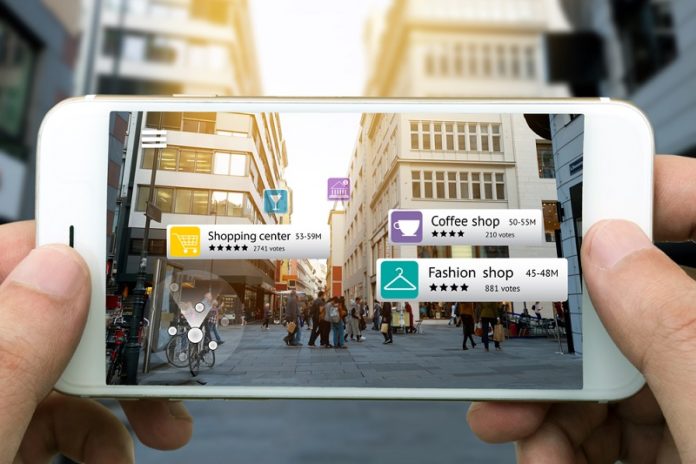One of the biggest challenges e-commerce retailers have had to deal with is finding a way for the consumers to interact with the products before purchasing. Owing to the fact that most people like to experience the product before making a purchasing decision, customers may abandon their carts. However, technological advancements have come in a big way to solve this through augmented reality (AR).
Simply put, augmented reality is a technology that creates a digital interface in the environment around a person by placing virtual objects in real-time in the real world. In other words, AR allows customers to review virtual products in their real-life environment, through computer-generated images on a screen to see how well they fit in their lives.
Augmented Reality in eCommerce is smart, fun, useful and it’s the future that is never going to vanish but only grows. With the trend and demand to shop things in your own comfort zone and eliminate the hassle to visit and explore the products, eCommerce has become a boon to the human population due to the almost real-life features of mobile e-commerce applications.
A study shows that 95% of all purchases will be done online by 2024. With this, Augmented Reality in eCommerce app development holds a massive potential to propel your business and boost sales with demand. The technological digitalization of businesses is so amazing that people can’t wait to see Augmented Reality in eCommerce and even want it to be a part of every niche.
Augmented reality technology is really starting to take off in a wide range of industries. Let’s look at some of the numbers to prove it:
- Global AR advertising revenue, which topped out at half a billion dollars in 2019, grew to $1.41 billion in 2020.
- Overall, more than 83 million people in the US will use AR on some kind of device at least once per month, and eMarketer expects this number to rise to 95.1 million by 2022.
- One AR research firm projects that advertising revenue could top $8 billion by the end of 2024.
How e-commerce businesses are using augmented reality
AR allows eCommerce customers to preview products or experience services in their own environment and on their own time, before electing to make a purchase. Using AR, your customers can preview products and be more likely to pick the right product the first time. Here are some amazing features of a mobile e-commerce application that can spark up your sales.
- Virtual try-on solutions
- Preview placement for a real-time glimpse
- Interactive user manuals
- Digitalized catalogs
- Social media filters
- Personalized & customized experience
Brands using AR successfully in their eCommerce
So how can you bring augmented reality to your eCommerce site? And which features of mobile e-commerce applications can you monetize? Will eCommerce app development turn out to be profitable and scalable for the brand? These brands have found a variety of ways to do all this successfully.
- Ikea uses AR to power furniture shopping at home
- Dulux Paint uses AR to show paint colors on customer’s wall
- Lego Hidden Side & Bic kids layer interactive games onto real toys
- Wannaby & Warby Parker apps let shoppers try stuff on at home
Large manufacturing organizations all around the world are already embracing the technology. Their initial expenditures are yielding exponential returns, allowing them to outperform their competitors by providing more engaging, connected, and visual sales experiences. As this momentum continues to grow, so will demand. As a result, the next big software categories to emerge will be based on the application of new AR technologies to specific domains.
What are the different types of AR
Augmented Reality in eCommerce app development is becoming lucrative and is essential to stay ahead of the competition.
- Projection-based AR – Projects the virtual 3D images of the product over a real object, space, or surface.
- Recognition-based AR – Detect an object in front of the camera and provide relevant information about it.
- Markerless AR – It doesn’t need to be triggered by a specific object in the real world. Instead, the user can place a virtual object anywhere they wish. You can then rotate and move the object.
- Location-based AR – Type of markerless AR that uses geographic location to display digital content at certain locations, for example, Pokemon Go.
- Outlining AR – It simply outlines the object for you. For example, if you are parking your car in the dark then these AR outlines will brighten the road lines for you to see.
- Superimposition-based AR – It replaces an object or a part of it with the Augmented digital part. The user is able to select the part to be augmented on the screen of your smartphone.
Final Words for AR
Augmented Reality can add a “Wow” factor to everything due to the advanced features of mobile e-commerce applications. The technology is making its way into big brands to keep them ahead of the competition which is why it has become necessary for all kinds of businesses to adapt it to beat the heat.
Augmented Reality in eCommerce is also a fabulous way to beat eCommerce competition. If you wish to stand out then your eCommerce business needs to learn a few techniques that can involve the usage of AR to build better engagement with old and new customers.
Some product categories can be a tough sell on eCommerce sites because it’s so difficult to interpret how the products will look in real life versus a computer or mobile screen. That’s why augmented reality applications, particularly since the onset of social distancing, are on the rise.
If you wish to learn more about eCommerce app development then hire a professional and dedicated team that has the skills to grow your business using the latest disruptive technologies.
Smith Johnes is a Content Marketer who loves to decode the changing landscape of disruptive technologies. He likes to stay up to date with the latest tech trends. Being writing as his hobby, Smith has come out with many interesting topics and information that attracts readers to unravel his write-up.
Augmented reality stock photo by Zapp2Photo/Shutterstock







